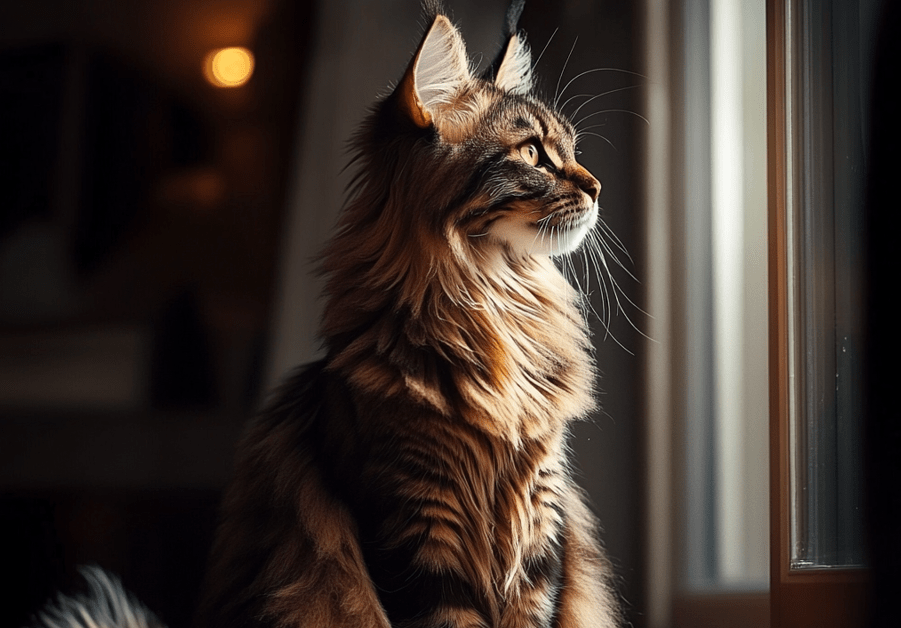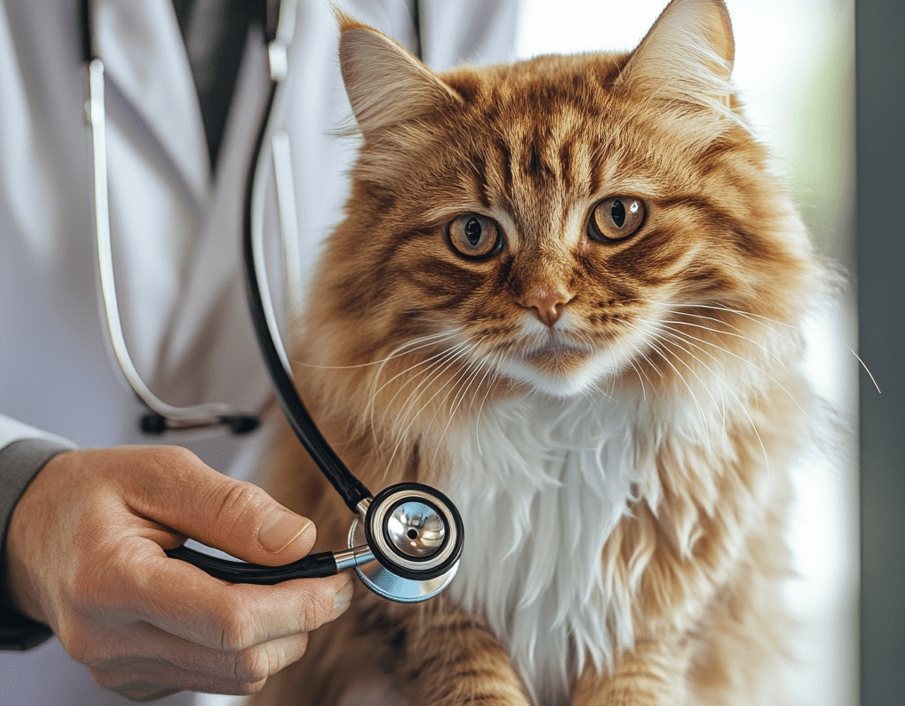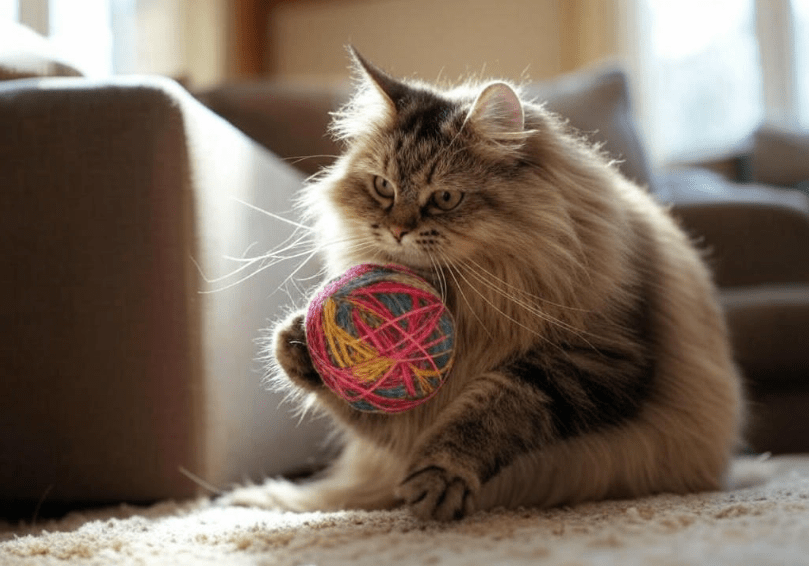
Maine Coon cats, known for their majestic size, tufted ears, and friendly personalities, are a beloved breed among cat enthusiasts. However, their large stature can predispose them to certain health issues, including hip dysplasia in Maine Coons. This condition, though not as common in cats as in dogs, can significantly impact a Maine Coon’s quality of life if not detected early. Recognizing the signs of hip dysplasia early is crucial for effective management and preventing worsening symptoms. This comprehensive guide explores the causes, symptoms, diagnosis, and treatment of hip dysplasia in Maine Coons, offering practical advice for cat owners to ensure their feline companions thrive.
What Is Hip Dysplasia in Maine Coons?
Hip dysplasia is a genetic condition affecting the hip joints, where the ball and socket do not fit together properly. In Maine Coons, this misalignment can lead to joint instability, cartilage damage, and eventual arthritis. While hip dysplasia is more prevalent in large dog breeds, Maine Coons, being one of the largest domestic cat breeds, are also at risk due to their size and genetic predisposition.
The condition can range from mild to severe, with symptoms often becoming more noticeable as the cat ages. Early detection is key to managing hip dysplasia in Maine Coons, as timely intervention can slow progression and improve your cat’s comfort and mobility.
Key Points About Hip Dysplasia
Cause: Primarily genetic, with environmental factors like obesity or injury contributing.
Risk Factors: Large size, rapid growth, and genetic predisposition in Maine Coons.
Impact: Pain, reduced mobility, and potential arthritis if untreated.
Why Are Maine Coons Prone to Hip Dysplasia?
Maine Coons are genetically predisposed to hip dysplasia due to their large, heavy frames. Their rapid growth during kittenhood can strain developing joints, increasing the likelihood of abnormalities. Other contributing factors include:
Genetics: Certain bloodlines may carry genes associated with hip dysplasia.
Weight: Excess weight puts additional stress on joints, exacerbating symptoms.
Activity Levels: Overly intense activity during growth phases can strain hips.
Nutrition: Poor diet or overfeeding during kittenhood may contribute to joint issues.
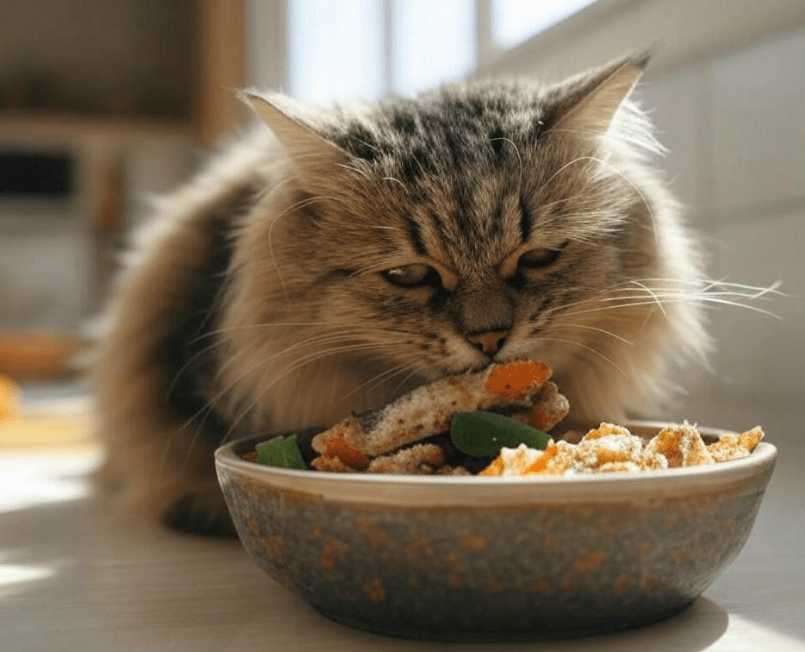
Understanding these risk factors can help owners take preventive measures to reduce the severity of hip dysplasia in Maine Coons.
Recognizing the Signs of Hip Dysplasia in Maine Coons
Spotting hip dysplasia early requires keen observation of your Maine Coon’s behavior and physical condition. Symptoms can be subtle at first, often mistaken for normal aging or minor injuries. Below are the key signs to watch for:
1. Limping or Lameness
One of the earliest indicators of hip dysplasia is limping, particularly in the hind legs. Your Maine Coon may favor one leg or show an uneven gait after activity. Lameness may come and go, worsening after exercise or play.
2. Difficulty Jumping or Climbing
Maine Coons are typically agile and love to jump onto furniture or cat trees. If your cat hesitates, struggles, or avoids jumping, it could indicate hip discomfort. You may notice them taking smaller, cautious movements or avoiding high surfaces altogether.
3. Reduced Activity Levels
A Maine Coon with hip dysplasia may become less playful or active. If your normally energetic cat starts spending more time resting or seems reluctant to engage in play, this could be a sign of joint pain.
4. Pain or Sensitivity
Cats with hip dysplasia may show signs of discomfort when touched around the hips or lower back. They might flinch, hiss, or try to move away during petting or grooming. In severe cases, you may notice muscle loss in the hindquarters due to reduced use.
5. Abnormal Posture or Movement
Watch for changes in how your Maine Coon moves or sits. They may adopt a “bunny hopping” gait, where both hind legs move together, or sit with their legs splayed to avoid pressure on the hips.
6. Stiffness After Rest
Morning stiffness or difficulty getting up after lying down is a common symptom. Your cat may move slowly at first but seem to “warm up” as they get moving.
Pro Tip: Keep a journal of any unusual behaviors or symptoms, noting when they occur and their severity. This can help your veterinarian make an accurate diagnosis.
Diagnosing Hip Dysplasia in Maine Coons
If you suspect hip dysplasia in your Maine Coon, a prompt veterinary evaluation is essential. Diagnosis typically involves a combination of physical examination, imaging, and medical history review. Here’s what to expect:
1. Physical Examination
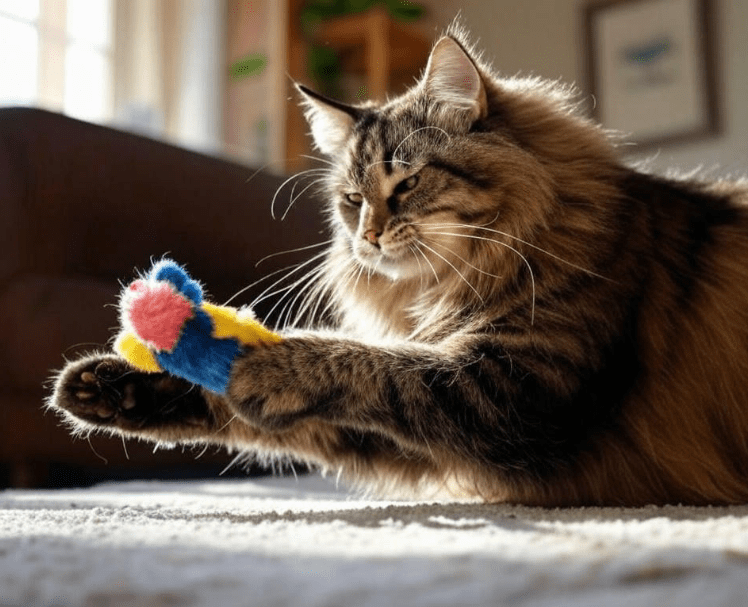
Your veterinarian will assess your cat’s gait, range of motion, and joint stability. They may manipulate the hip joints to check for pain, looseness, or grinding sounds (crepitus), which indicate cartilage damage.
2. X-Rays
Radiographs (X-rays) are the gold standard for diagnosing hip dysplasia. They reveal abnormalities in the hip joint, such as a shallow socket, misshapen femoral head, or signs of arthritis. Sedation may be required to ensure clear images.
3. Advanced Imaging
In complex cases, your vet may recommend CT scans or MRIs to get a detailed view of the joint and surrounding tissues. These are less common but can be useful for surgical planning.
4. Genetic Testing
While not a direct diagnostic tool, genetic testing can identify predispositions to hip dysplasia in Maine Coons, especially in breeding programs. Reputable breeders often screen for this condition to reduce its prevalence.
5. Blood Tests
Blood work may be performed to rule out other conditions, such as infections or inflammatory diseases, that could mimic hip dysplasia symptoms.
Note: Early diagnosis is critical, as mild cases can often be managed conservatively, while severe cases may require surgical intervention.
Treatment Options for Hip Dysplasia in Maine Coons
The treatment plan for hip dysplasia in Maine Coons depends on the severity of the condition, the cat’s age, and overall health. The goal is to reduce pain, improve mobility, and slow disease progression. Treatment options include:
1. Conservative Management
For mild to moderate cases, non-surgical approaches can be highly effective:
Weight Management: Maintaining a healthy weight reduces stress on the hips. Work with your veterinarian to develop a balanced diet and feeding plan tailored to your Maine Coon.
Joint Supplements: Glucosamine, chondroitin, and omega-3 fatty acids can support joint health and reduce inflammation. Look for vet-recommended products.
Pain Relief: Non-steroidal anti-inflammatory drugs (NSAIDs) or other pain medications may be prescribed to manage discomfort. Always follow your vet’s dosage instructions.
Physical Therapy: Gentle exercises, such as controlled walking or stretching, can improve muscle strength and joint stability. Some vets offer feline physical therapy or hydrotherapy.
Environmental Modifications: Provide low, padded surfaces for resting, ramps for easy access to furniture, and litter boxes with low sides to accommodate mobility issues.
2. Surgical Options
In severe cases or when conservative treatments fail, surgery may be necessary. Common procedures include:
Femoral Head Ostectomy (FHO): The femoral head (ball of the hip joint) is removed, allowing a “false joint” to form. This is effective for relieving pain and restoring mobility in cats.
Total Hip Replacement (THR): The entire hip joint is replaced with a prosthetic. This is less common in cats but may be considered for young, otherwise healthy Maine Coons.
Juvenile Pubic Symphysiodesis (JPS): A preventive surgery for kittens at high risk, performed before six months of age to improve hip joint alignment.
Surgery carries risks and requires significant recovery time, so it’s typically a last resort.
3. Alternative Therapies
Some owners explore complementary treatments to support their Maine Coon’s comfort:
Acupuncture: May reduce pain and improve mobility in some cats.
Laser Therapy: Low-level laser therapy can reduce inflammation and promote tissue healing.
Herbal Remedies: Consult a holistic veterinarian before using any herbal supplements, as some may interact with medications.
Always discuss alternative therapies with your veterinarian to ensure they’re safe and effective for your cat.
Preventing Hip Dysplasia in Maine Coons
While hip dysplasia is largely genetic, proactive steps can minimize its impact or delay onset:
1. Choose a Reputable Breeder
Select a breeder who screens for hip dysplasia and other genetic conditions. Ask for health certifications and X-ray results from the parents to ensure they’re free of hip abnormalities.
2. Support Healthy Growth
Avoid overfeeding kittens, as rapid weight gain can stress developing joints. Feed a high-quality, balanced diet formulated for large-breed cats, and monitor portion sizes.
3. Encourage Moderate Exercise
Promote gentle play to build muscle without overloading joints. Avoid activities that involve excessive jumping or roughhousing, especially in kittens.
4. Regular Veterinary Checkups
Schedule annual or biannual vet visits to monitor your Maine Coon’s joint health. Early screening can catch subtle signs of hip dysplasia before they become severe.
5. Maintain a Healthy Weight
Obesity is a major risk factor for worsening hip dysplasia. Use a body condition score chart to assess your cat’s weight and adjust their diet as needed.
Living with a Maine Coon with Hip Dysplasia
Caring for a Maine Coon with hip dysplasia requires dedication, but many cats lead happy, fulfilling lives with proper management. Here are tips for day-to-day care:
Create a Comfortable Environment: Provide soft bedding, easy-to-access litter boxes, and ramps to favorite spots.
Monitor Symptoms: Watch for changes in mobility or behavior, and report them to your vet promptly.
Stay Consistent with Treatments: Administer medications and supplements as prescribed, and follow through with physical therapy or exercise routines.
Offer Mental Stimulation: Cats with limited mobility may become bored. Provide interactive toys, puzzle feeders, or window perches to keep them engaged.
Common Misconceptions About Hip Dysplasia in Maine Coons
Several myths about hip dysplasia can confuse owners. Let’s debunk them:
Myth 1: Only Old Cats Get Hip Dysplasia: While symptoms often appear with age, the condition can affect young cats, especially if genetic.
Myth 2: Hip Dysplasia Always Requires Surgery: Many cases can be managed with non-surgical treatments.
Myth 3: All Maine Coons Will Develop Hip Dysplasia: Not every Maine Coon is affected, and responsible breeding reduces the risk.
When to Seek Veterinary Help
If you notice any signs of hip dysplasia in your Maine Coon, don’t delay. Contact your veterinarian if your cat:
-
Shows persistent limping or lameness
-
Avoids jumping or climbing
-
Exhibits pain or sensitivity around the hips
-
Has difficulty standing or moving after rest
Early intervention can make a significant difference in your cat’s comfort and long-term prognosis.
Conclusion: Empowering Maine Coon Owners
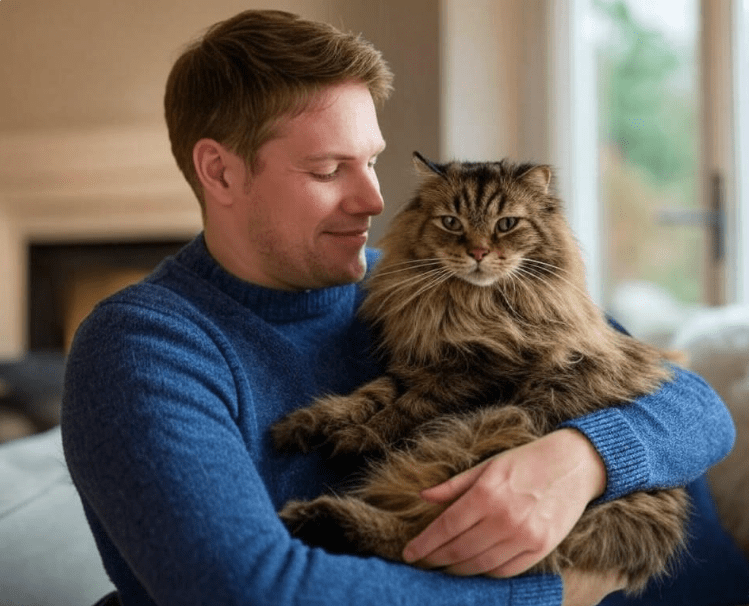
Hip dysplasia in Maine Coons is a manageable condition with the right knowledge and care. By learning to spot the signs early, seeking prompt veterinary care, and implementing preventive measures, you can help your Maine Coon live a comfortable, active life. Whether through weight management, joint supplements, or environmental modifications, small changes can have a big impact.
If you’re considering adopting a Maine Coon or already share your home with one, stay vigilant about their joint health. Partner with a trusted veterinarian, choose a reputable breeder, and prioritize your cat’s overall well-being. With dedication, you can ensure your Maine Coon thrives, even in the face of hip dysplasia.
For more information on Maine Coon health or to connect with other owners, consult your veterinarian or join Maine Coon communities online. Your proactive approach will make all the difference in your cat’s quality of life.

